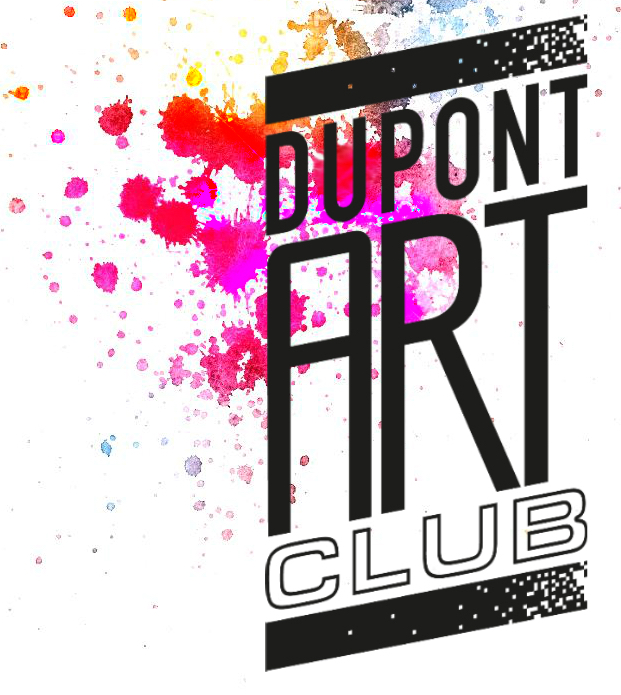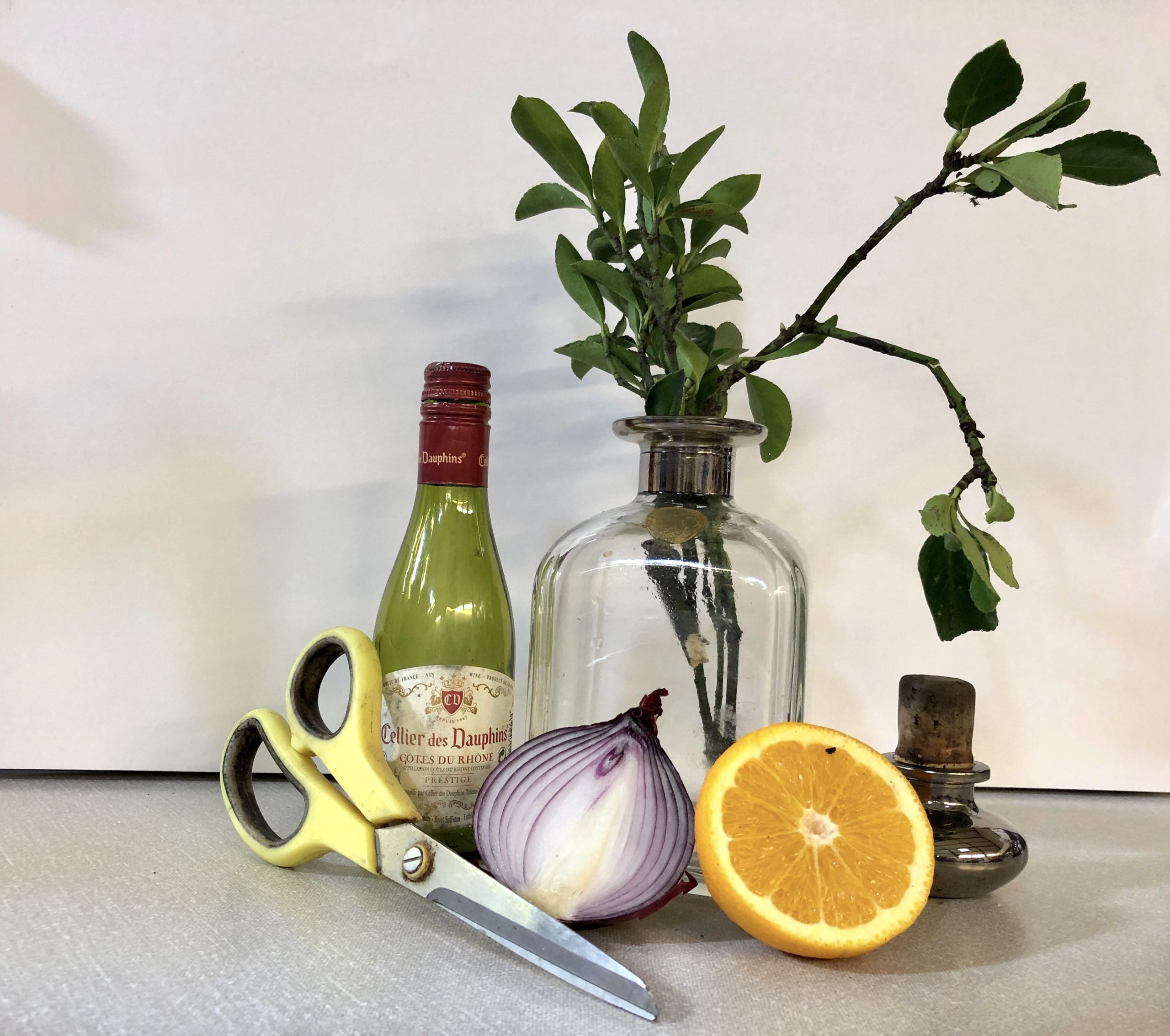Start out by choosing your main object, then you can add interest by selecting additional objects which compliment this. It’s probably best to have a theme, which can be anything – the possibilities are endless.
You should use an odd number of objects as this is more appealing than an even number. Make sure you have variety in size and shape as well as colour. When arranging the objects try to ensure that you use the shapes to lead the eye into and around the image.
A square format works well for still life, but depending on your subjects you can also use portrait or landscape.
Good lighting is essential and it may help to position an Anglepoise lamp to get good shadows which create tonal value.
This is the still life Caroline prepared
She started by lightly drawing the main object in outline which was the large bottle, which she positioned slightly right of centre. Next she drew the small bottle outline, noting its size and shape relative to the first object. Continuing, she added the onion the orange and the bottle top, carefully checking where objects overlapped. The scissors were then drawn in very carefully, as the long point of the blade is used to lead the eye . When trying to place an object at an angle like this, it may help to hold your pencil horizontally up towards the object and tilt it to the required angle. Then place the pencil at this angle on the paper. Don’t use an eraser if you are unhappy with the positioning, just redraw in the correct position next to it. The danger of using an eraser is that it is easy to redraw the same mistake once you’ve removed the original.
Once all your outlines are in you can go back and enter the details . Finally you put in the shadows. These are very important to add tonal value . The dark line on the scissors leads the eye up to the dark top of the onion and from there up to the hanging leaf. This will create harmony.

